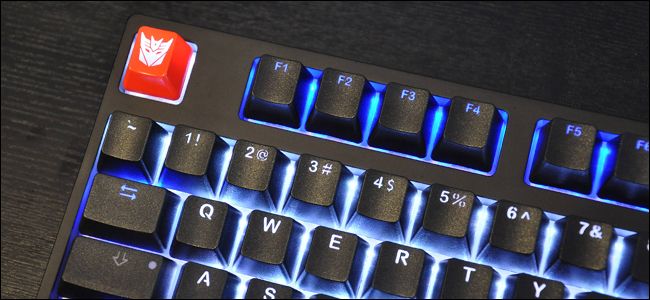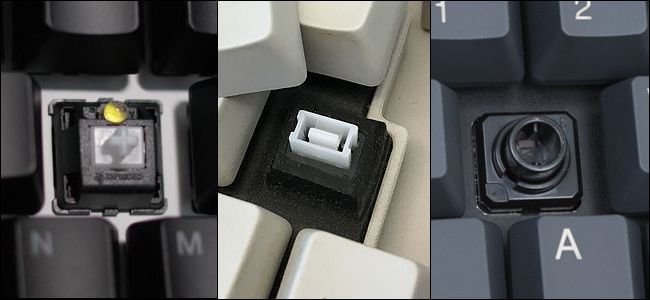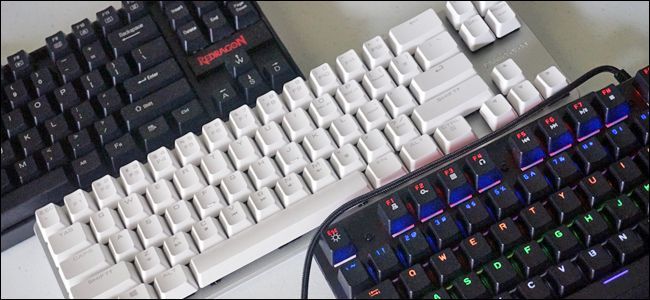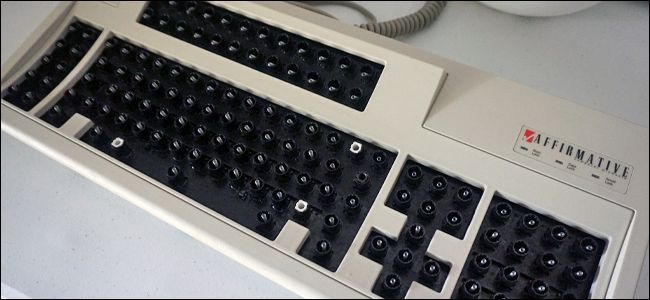Quick Links
Mechanical keyboards are a surprisingly resilient trend among gamers and power users. But as they get more popular, the various options and technical variations become more and more complex. If you're looking for everything you need to know to get started in this surprisingly varied portion of the PC world, we're here to help you out.
The Basics: It's All About the Switches
A good place to start is our basic run-down of the pros and cons of a mechanical keyboard. The biggest difference in any specific keyboard selection is the switches: most are variants on the ubiquitous Cherry MX design, with different click actuations and spring strengths determining the "feel" of the keypress. Some keys will be harder to press down than others, while others will be light. Some will be clicky, some will have a small bump, and some will have no tactile response at all. These characteristics are usually delineated by the "color" of the switch, with each color representing a broad assignment for tactility and resistance.
But there are many variations beyond the standard Cherry MX design, like the older Alps and buckling spring designs or the niche Topre electrostatic switch (shown above middle and right). When you're done with our article on the basics, open up a new tab to our exhaustive glossary of terms and definitions related to mechanical keyboards of all kinds. It's a handy reference for all kinds of keyboards, and it covers every major and minor switch type you'll find.
Find a Keyboard with the Bells and Whistles You Want
Once you know the basics, it's time to actually set out and find a keyboard. You'll obviously want to find one with the switches you want, but beyond that, you'll also want to look at build quality and other features, like key layout and backlighting.
If you're looking for a specific recommendation, the CODE keyboard is a great place to start. It's a solid option that covers all the basics and comes in a variety of switch types and sizes. But not everyone wants to drop $150 on their first mechanical. If you just want to try your hand at the mechanical keyboard trend without spending a ton upfront, there are plenty of cheaper options. We have recommendations for multiple boards in the popular Blue, Brown, and Red switch styles, all under $40---and with many key layouts and lighting features, too. (By the way, lighting isn't just for show---it can be pretty useful, depending on how programmable it is.)
Unfortunately, there is one feature that's a bit rarer in mechanical keyboards: wireless. But we've managed to track down some great choices for Bluetooth-equipped boards at a variety of prices.
Customize Your Board to Your Heart's Content
You don't have to stop there, though. Half the fun in mechanical keyboards is customizing them with your own keycaps, so check out our article on exactly how to do that. (It's not complicated, we promise!) If the sound of the keys themselves are bothering you---and yes, they are quite a bit more noisy than most membrane-based keyboards---you can add dampeners to the individual switches as well.
And if you're ready to jump into the deep end of classic keyboards, we have a guide on disassembling and cleaning the timeless Model M, the buckling spring keyboard that still inspired modern designs. It's time-consuming, but not particularly difficult, and the results can be dramatic.




